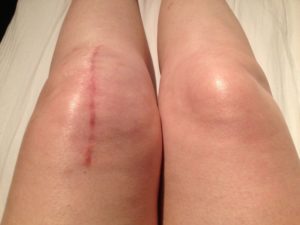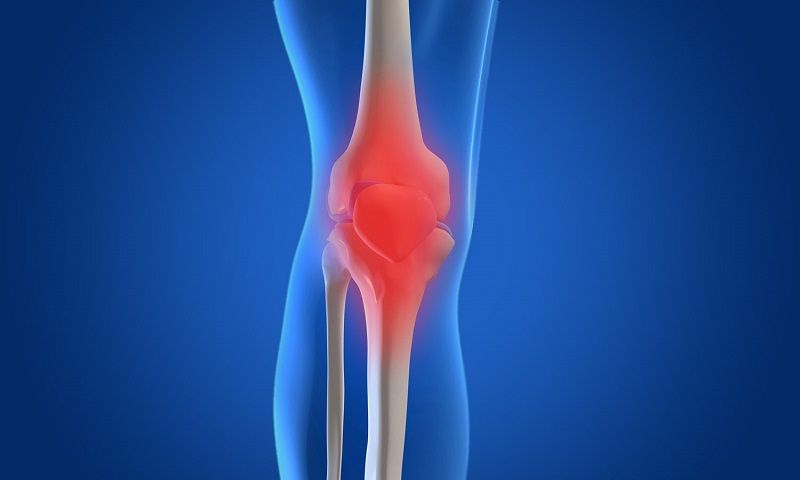Read this blog to know How to Manage Pain Swelling and Bruising after a Total Knee Replacement and Total Knee Replacement Pain Management Protocol…….
Knee Replacements Surgeries are among the most commonly performed and highly successful orthopedic surgical procedures. A knee replacement is done when the knee joint has worn out, most often as a result of wear-and-tear arthritis.
When the surgery is performed, the worn-out cartilage is removed and the ends of the bone are shaped. Over the ends of the bone, a metal implant is fit into place, and a plastic spacer is placed between the metal implants. This reconstructive procedure is performed to allow a smooth, pain-free movement of the joint.
Refer this if looking for surgery of Total Knee Replacement Patna
This surgery, like other surgery, results in some pain and discomfort for patients post-operation. Therefore, this blog deals with some measures of How to Manage Pain, Swelling, and Bruising after a Total Knee Replacement.
But before that let’s look at some of the causes of post-operative knee pain.
Causes of Post-Operative Knee Pain
The most important step in finding a solution to continuous discomfort is to first determine the cause of the pain. Without this knowledge, it becomes very difficult to find an appropriate treatment. The most common causes of pain after knee replacement surgery include:
- Loosening of the implant: this is most often the cause of pain for years or decades after the surgery. However, it is seldom the cause of persistent Sharp Pain after Knee Replacement
- Infection: Infection is a worrisome and serious concern. Any increase in pain after knee replacement should raise concerns for infection. Most often, the signs of infection are obvious, but subtle infections may be the cause of persistent discomfort.
- Kneecap problems: Kneecap problems are a common cause of knee pain. Significant forces are applied to the kneecap, even with normal activities, such as walking down the stairs or getting up from a chair. Getting a kneecap to perform well with a replacement can be technically challenging even for a skilled surgeon.
- Alignment problems: Many patients focus on the knee replacement implant brand or type. Although, a poorly aligned implant may not function well, no matter the brand which results in Severe Pain after Knee Replacement Surgery.
Other issues that can cause persistent knee pain includes bursitis, pinched nerves, and complex regional pain syndrome.
Pictures of Swelling after Knee Replacement


What Helps Pain after Total Knee Replacement surgery to ease?
Having some pain, swelling, and bruising is a normal part of the recovery process following knee surgery. Although, there are many ways to manage these postoperative symptoms and ease your recovery.
Following mentioned are some of the Total Knee Replacement Pain Management Protocol that can be followed.
Managing Swelling
Swelling is a normal part of healing process. According to surgeons, many people experience moderate-to-severe swelling in the first few days or weeks after the surgery, and mild-to-moderate swelling and Pain after Knee Replacement 6 Months.
One can reduce swelling by doing postoperative exercises and by using compression stockings. Applying ice packs on the swelling area can also help in reducing pain and inflammation in the knee and the surrounding tissue.
Pain Medication
Some pain is normal after knee replacement surgery. This pain generally reduce over time. The physical therapist may provide massage and prescribe exercises to help reduce inflammation. The pain will likely diminish over period of several weeks.
In addition to that, the surgeon also recommend to take oral pain medication for up to several weeks. However, if the Pain still persists, then doctor might prescribe stronger pain relievers and will ask the patient to continue with the exercise and physical therapy.
How Long Will I Need Pain Medication after Total Knee Replacement?
It is not unusual to require some form of pain medication for approximately 6-12 weeks. Initially, the medication will be strong (such as a narcotic). Taking it as prescribed usually provides the most effective pain relief.
Though, after 6-12 weeks when the pain becomes mild-moderate the doctors might recommend to stop with oral medications depending on the condition and to only continue with exercise and physical therapy.
Dealing with Bruising
Bruising around the knee may last 1 to 2 weeks following surgery. Bruising is a purplish discoloration that indicates blood gathering under the skin.
The healthcare team may provide a blood thinner to prevent deep vein thrombosis, which may add to the bruising. However, some bruising is normal and will subside over time, but it can come with additional tenderness. One can also reduce inflammation and bruising by elevating leg.
Home Treatments
Applying topical cream and patches to the knee can help reduce pain and make it easier to sleep at Night. These usually include active ingredients such as capsaicin, menthol, or salicylates.
Doctors may also recommend to wear compression stockings while in the hospital and may also recommend to wear them for at least two week. These socks can help reduce the risk of developing a blood clod and may relief from Knee Replacement Pain at Night.
Physical Therapy
Surgeons must recommend to undergo physical therapy post knee replacement surgery. Physical Therapy helps to simulate blood flow and reduce pain of the knee and surrounding areas.
The physical therapist may use Transcutaneous Electrical Nerve Stimulation (TENS) and may also provide massages to simulate the muscles and tissue surrounding the knee.
Follow Your Exercises
Physical therapist will recommend exercises to help strengthen the muscles, increase your range of motion, and to increase blood flow around the knee. This promotes healing and helps drain fluid away from the painful tissue.
Exercising can also help with postoperative pain, but it is important to avoid certain actions or positions that can cause damage.
Note: A Total Knee Replacement will affect each person differently. Most people will experience some pain, swelling and bruising after surgery. Therefore it is important for the person to discuss with their doctors as soon as they develop any discomfort or pain.
However, if looking for Knee Replacement Surgery in Patna, contact Dr. Ramakant Kumar for top treatment results as well as post-operative assistance.
So, here ends the blog for How to Manage Pain Swelling and Bruising after a Total Knee Replacement. We hope that you enjoyed reading this blog.
